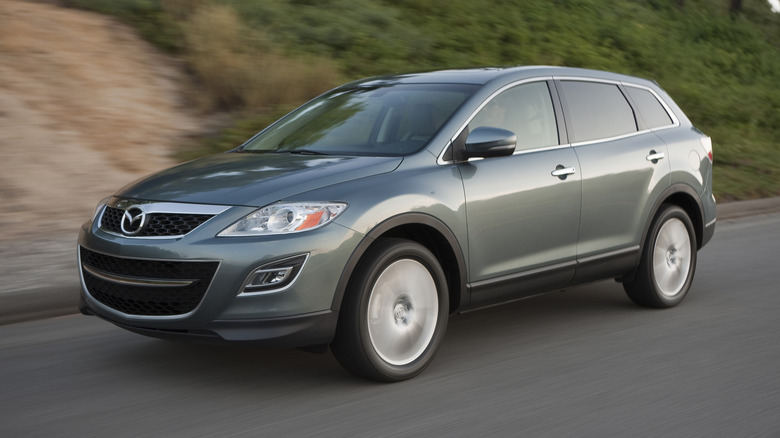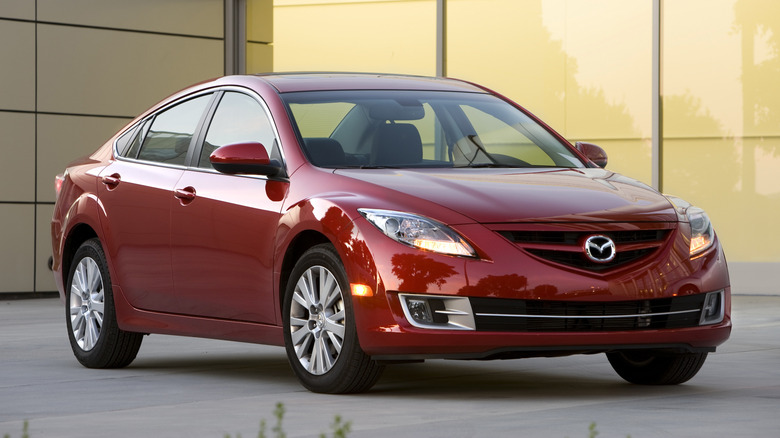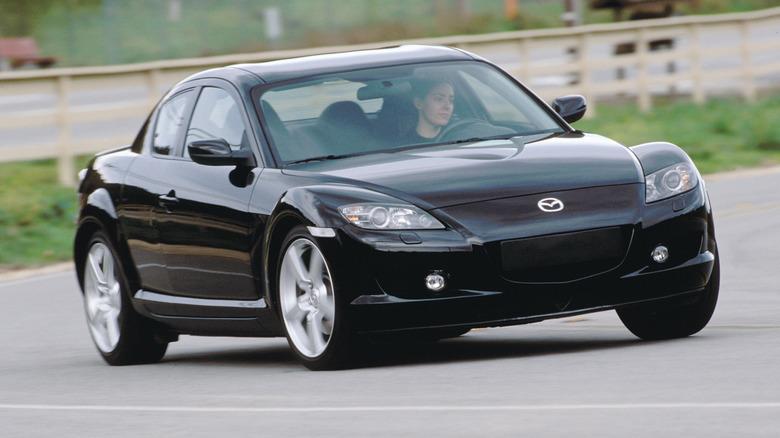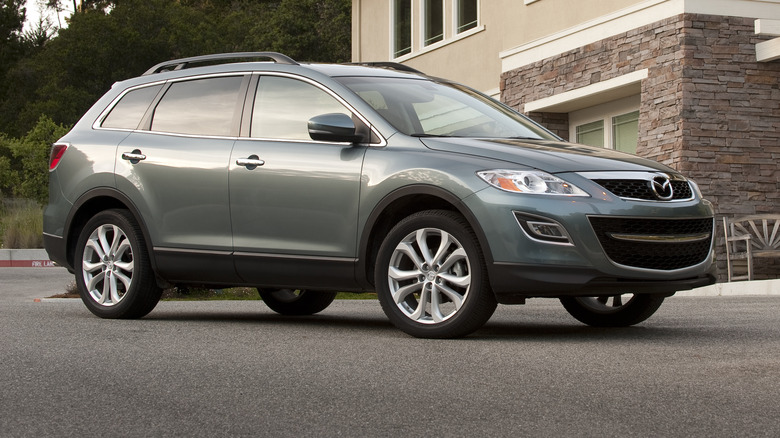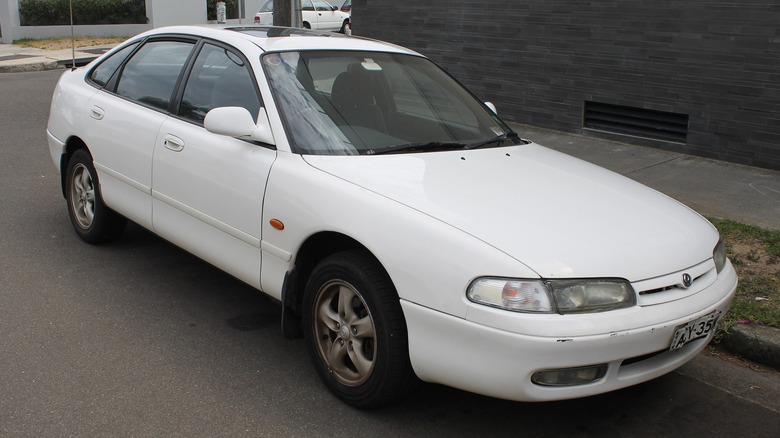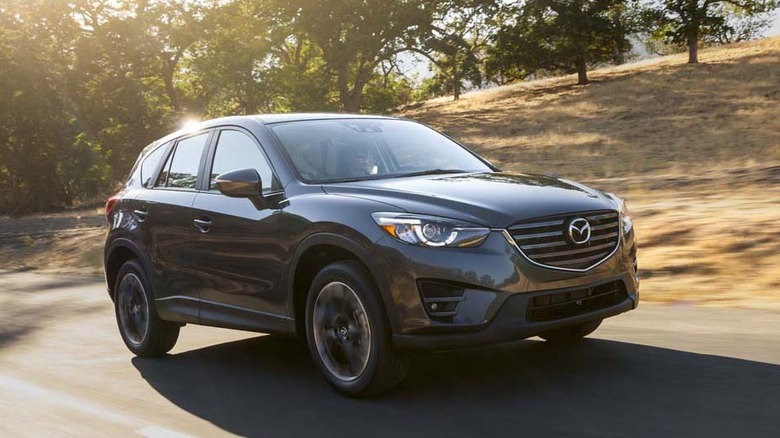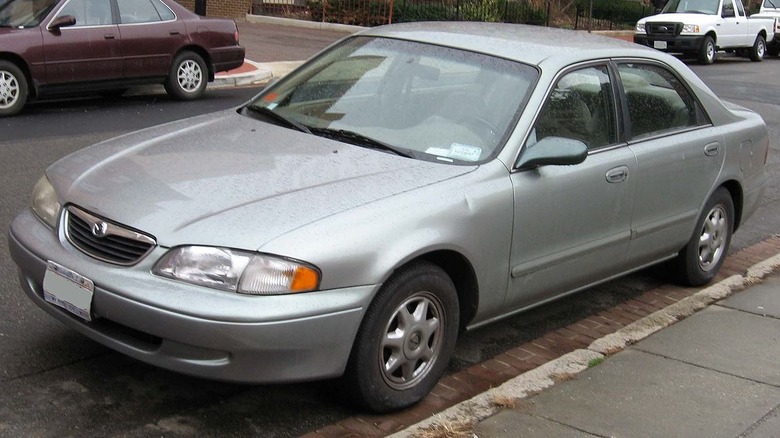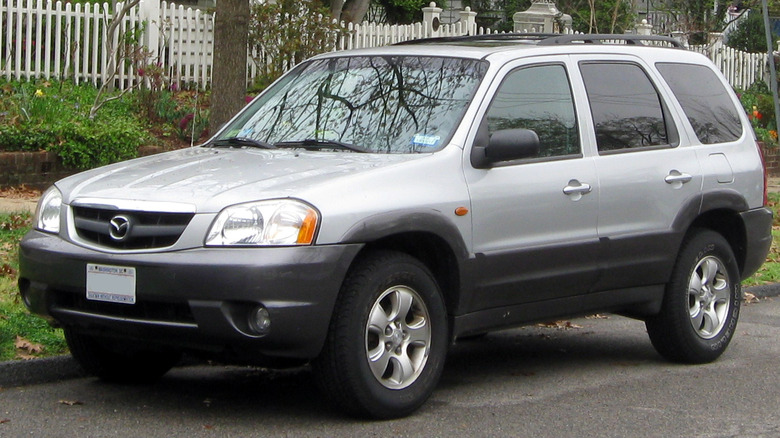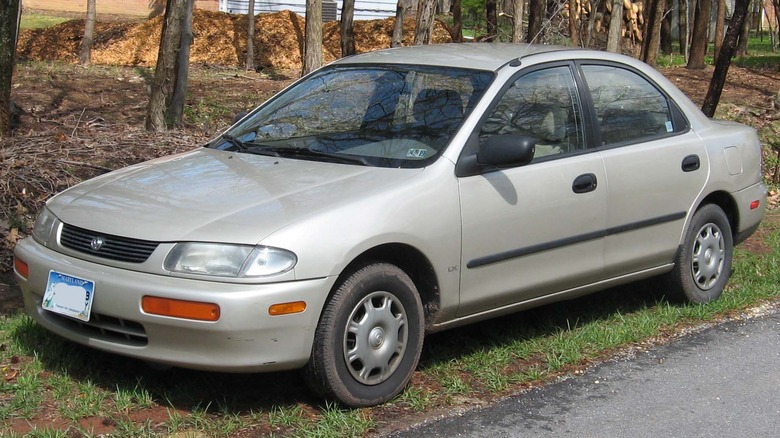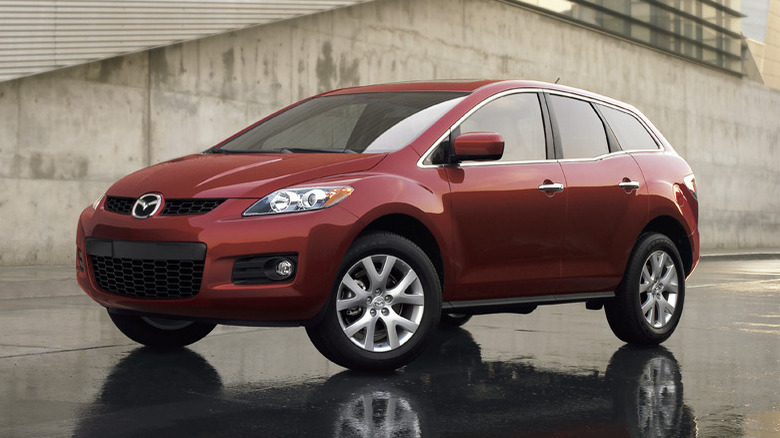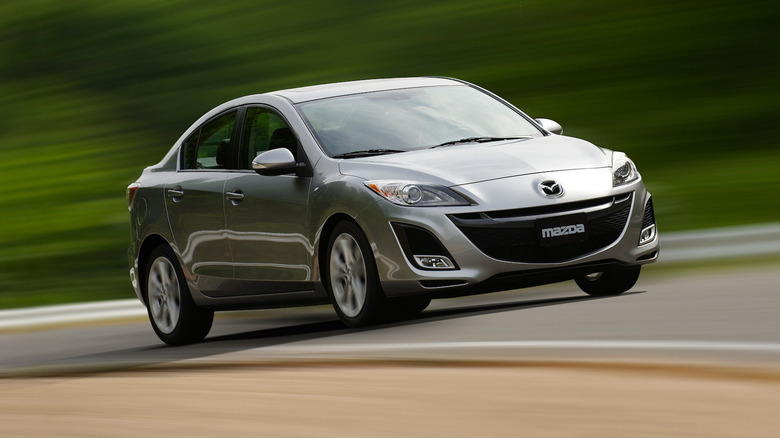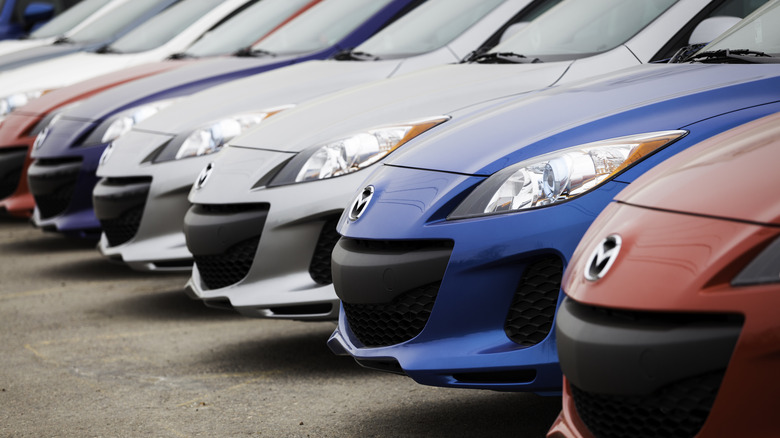10 Used Mazda Models You Should Steer Clear Of At All Costs
A smaller, quirkier rival to the big Japanese brands, Mazda has evolved from a small cork manufacturer into a globally recognized automaker. It recently reported record sales in North America, selling over 360,000 vehicles in 2023. Many of its cars are renowned for being more entertaining to drive than their rivals, from the tiny Miata roadster to the flagship CX-90. Mazda is also generally considered a reliable manufacturer and was crowned the 7th most reliable car brand in the 2024 JD Power Dependability Survey.
However, not all of the cars in its back catalog are quite so dependable. Certain model years have seen notable blips in Mazda's usually solid track record for quality and are they're best avoided for used buyers. SlashGear has rounded up a selection of the most notoriously unreliable Mazda models using owner complaints and recall data sourced from the NHTSA to help you steer clear of the most troublesome cars.
2009 Mazda6
The all-new second-generation Mazda6 launched for the 2009 model year, and while it received praise from both critics and customers for its fresh looks and attractive interior, it did suffer from some teething issues during its first year on sale. According to NHTSA data, the 2009 Mazda6 has required 10 recalls over its lifespan and has been the subject of more than 360 complaints to the agency.
Five of these recalls concern faults with the airbags or related components, while other recalls include a potentially defective door handle and excessive corrosion of a suspension mounting point. Perhaps the strangest recall affecting the car is the 2011 recall regarding fuel tank pressure, with 52,000 examples of the Mazda6 having to undergo remedial work as there was a risk of spiders entering and blocking the canister vent line.
Owner complaints are varied, but a significant proportion mention excessive corrosion, with both the front and rear subframes highlighted as weak points. In some instances, drivers have reported sudden suspension failure while driving which was later found to be caused by excessive corrosion. Alongside the 2009 model year, the 2010 and 2011 model year Mazda6 also suffers from similar reported problems, although neither has been subject to as many complaints as the 2009 model.
2004 Mazda RX-8
The RX-8 was brand new for the 2004 model year, replacing the RX-7 as Mazda's sole rotary-powered sports car. The rotary engine infamously suffered from reliability issues — in fact, there are plenty of rotary-powered cars we'd be shocked to even see on the road today — but the 2004 RX-8 suffered from more than just engine trouble. According to the NHTSA, the car has been subject to 10 recalls to date, with over 500 complaints submitted to the agency by owners.
Four of those complaints center around airbags, as the RX-8 is one of many models affected by the Takata scandal. Two recalls have also been issued regarding the car's fuel pump, with both the fuel pump pipe and sealing rings potentially causing dangerous fuel leaks. Two suspension issues have also required recalls, alongside a defective heat insulator and an issue with melting exhaust system components.
Alongside the issues highlighted in the recalls, a concerning number of owner complaints also center around faults with the clutch and transmission. Complaints range from premature transmission failure to the clutch pedal allegedly snapping or otherwise failing while driving.
2012 Mazda CX-9
It can be quite often the case that newer models with unproven designs suffer from the highest rate of reliability issues, but not with the 2012 Mazda CX-9. The car arrived for the 2012 model year having already been on the market for several years, but managed to rack up a higher number of driver complaints to the NHTSA than any previous model year. In total, 218 complaints have been recorded as of this writing, along with four recalls.
Three of those four recalls concern the car's Takata airbags. One was issued in response to reports of excessive corrosion of certain suspension components. However, most owner complaints center around a different issue, one that has not been subject to a recall. Over 130 reports cite brake failure as the cause for filing the report, with the brake booster being the most common point of failure. Some owners reported brakes becoming harder to operate or even inoperable while on the road. A smaller number of owners also reported water pump failure, often causing significant or total engine failure and sometimes resulting in the car being written off.
1995 Mazda 626
The 1995 Mazda 626 is one of a handful of Mazda cars to hold the unfortunate title of having recorded over 500 owner complaints to the NHTSA. The majority of those complaints — nearly 350 of them — concern the car's powertrain, more specifically a faulty transmission. Scores of owners reported their car's transmissions failing prematurely, with some even replacing the transmission multiple times at Mazda dealers and still suffering issues.
The transmission failure occurred at a wide variety of reported mileages, with some owners reporting problems at mileages over 150,000 miles and some clocking less than 80,000 miles before the failure occurred. In addition to this well-documented flaw, the 626 has also been subject to four recalls to date, most recently concerning a faulty ignition switch which could overheat and pose a fire risk. The recall was issued in 2015, but a small number of owner complaints allege that the remedial work could not be completed as their local dealerships didn't have the correct part available. Older recalls were also issued for a leaking fuel filter and faulty airbags.
[Featured image by Jeremy via Wikimedia Commons | Cropped and scaled | CC BY 2.0]
2016 Mazda CX-5
SlashGear reviewed the 2016 Mazda CX-5 and found it to be one of the best people movers in its segment. A range of engines was available — albeit some feeling more enthusiastic than others — and in top-spec form, the CX-5 was surprisingly enjoyable to drive. However, in the years since that review, several issues have emerged that make the 2016 CX-5 a much less desirable used pick. The NHTSA has logged 448 complaints and five recalls regarding the model as of this writing, with several common failure points causing trouble for owners.
The most frequent complaint involved the failure of the car's lights — either the daytime running lights or the headlights. The daytime running lights were subject to a 2020 recall on certain CX-5s, but reports have continued to appear of lighting issues as recently as January 2024. Prematurely wearing or failing brakes have also been reported by multiple owners, alongside various electrical gremlins ranging from a faulty infotainment system to an overheating seat heater.
1998 Mazda 626
Mazda unveiled a new generation of the 626 for the 1998 model year, boasting updated styling and improved interior space. Today, its age and rather forgettable status have made it cheap to buy used, but its status as one of Mazda's most troublesome cars means it's best to stay away from it. The NHTSA has recorded 438 complaints about the car to date, with the car subject to six recalls. All but one of those recalls happened at least 15 years ago, while the most recent recall, for a faulty ignition switch, was issued in 2015.
The majority of owner complaints, however, involve none of the above issues. Rather, most concern the powertrain, with the car's transmission accounting for a majority of complaints. Premature transmission failure is widely reported, with owners alleging partial or total failure, often with little warning. A small number of owners also report their car mysteriously stalling while driving, with the driver often not able to restart the car once it had stalled. Some of these reports linked this failure to a 2000 recall involving a timing belt tensioner, either because the original recall work had not been carried out or the replacement part had still not fixed the issue.
[Featured image by IFCAR via Wikimedia Commons | Cropped and scaled | Public Domain]
2001 Mazda Tribute
With Mazda under Ford ownership at the turn of the century, it made sense for the Japanese brand's first American market SUV to be related to the Blue Oval. The Tribute debuted in 2001 and was built alongside the Escape at Ford's plant in Kansas City. Both were related, sharing many of the same internals. The 2001 Escape was not a particularly reliable car, and unfortunately, since they were built on the same assembly line, neither was the 2001 Tribute. The NHTSA has recorded 580 complaints for the model year to date, alongside 15 recalls.
Many recalls are shared with the Escape — an issue with the brake master cylinder, for example, plus a defective speed control cable connector. The most common area for complaint for the Tribute was the engine and engine cooling, but others reported issues with the fuel system, door locks and handles, and various issues with the brakes. Excessive corrosion is also frequently cited as a point of concern.
[Featured image by IFCAR via Wikimedia Commons | Cropped and scaled | Public Domain]
1995 Mazda Protege
The 1995 Mazda Protege wasn't the company's most unique or exciting car, and it wasn't its most reliable either. The NHTSA has recorded 206 complaints to date and five recalls for the car. One such recall regarded defective airbags, although it appears from the scores of owner complaints that not every car affected by the issue was properly remedied.
The airbags are the most common area of complaint for owners, followed by issues surrounding the car's exterior lighting. That, too, was the subject of a recall, with both side lights and headlights separately recalled. Notably, a significant proportion of owner reports allege that their cars suffered from one or more of the issues affected by a recall, yet their cars' VINs weren't included in the official recall list. Therefore, they were ineligible for free replacement parts. The car's age and relative obscurity today mean that it's unusual to find one on the used market, but for anyone who does find a suspiciously cheap 1995 Protege, caution is advised.
[Featured image by IFCAR via Wikimedia Commons | Cropped and scaled | Public Domain]
2007 Mazda CX-7
Combining the practicality of an SUV with the driving manners of something much smaller and sportier, the 2007 Mazda CX-7 was a unique offering in its segment. It helped set the blueprint for the brand's later crossovers, continuing through to the 2024 CX-90, which SlashGear found to be the best handling three-row family hauler of its kind. The CX-7 debuted for the 2007 model year, and it seems that, as is often the case, the initial batch of cars had some teething troubles. The NHTSA has recorded over 500 complaints about the car to date, alongside five recalls. Three recalls concern defective Takata airbags — an unfortunate but not uncommon problem plaguing many vehicles made around that era. Another recall was issued for a potentially defective roof rack bolt, while the fifth recall dates from 2016 and concerns excessive corrosion of certain suspension components.
Airbags are one of the most common areas of owner complaints for the 2007 CX-7, accounting for over 100 complaints logged with the NHTSA. The most common issues, however, centered around the engine. Drivers reported frequent AC compressor failure, sometimes resulting in fire, as well as persistent problems with the variable valve timing. These issues seem to have most affected 2007 models, with the 2008 CX-7 receiving less than 200 complaints and the 2009 CX-7 receiving a mere 63 complaints to date.
2010 Mazda3
With 672 complaints to the NHTSA as of this writing, the 2010 Mazda3 is the most complained about Mazda on the road today. It's been subject to three recalls. One concerned a fire risk due to improperly installed wiring, one concerned excessive corrosion of the rear liftgate struts, and one concerned a defective seat lifter. Owner complaints also highlight a variety of other shortcomings, with the most common complaint regarding the car's dashboard.
Hundreds of owners have reported their cars' dashboards becoming sticky and melting in hot conditions, in many cases causing the dash to become reflective and obscure the driver's vision. Mazda has not issued a recall for the problem, with reports alleging that owners have taken their cars to dealerships to be told that there's nothing they can do to fix it. The car is also the subject of an open NHTSA investigation into whether its Takata-supplied airbags require a recall, but no decision has been made as of this writing.
Our selection methodology
To build a list of the least reliable used Mazdas, SlashGear searched the NHTSA's database of every car sold by the manufacturer between 1990 and the present day. The primary criteria for inclusion on the list was a notably higher amount of owner complaints than average. In particular, cars with significant numbers of complaints concerning issues like structural or powertrain problems were given preference, as these will likely be the most complicated and costly to fix for used car owners.
Recalls were also considered in the inclusion criteria. A higher number of recalls over any car's lifespan increases the chance that a used example will have not had one or more of those recall issues rectified. In many cases, it can be difficult for used car buyers to fully verify the extent of any recall remedial work that has been performed, making cars with higher numbers of recalls generally worth avoiding for a hassle-free ownership experience.
